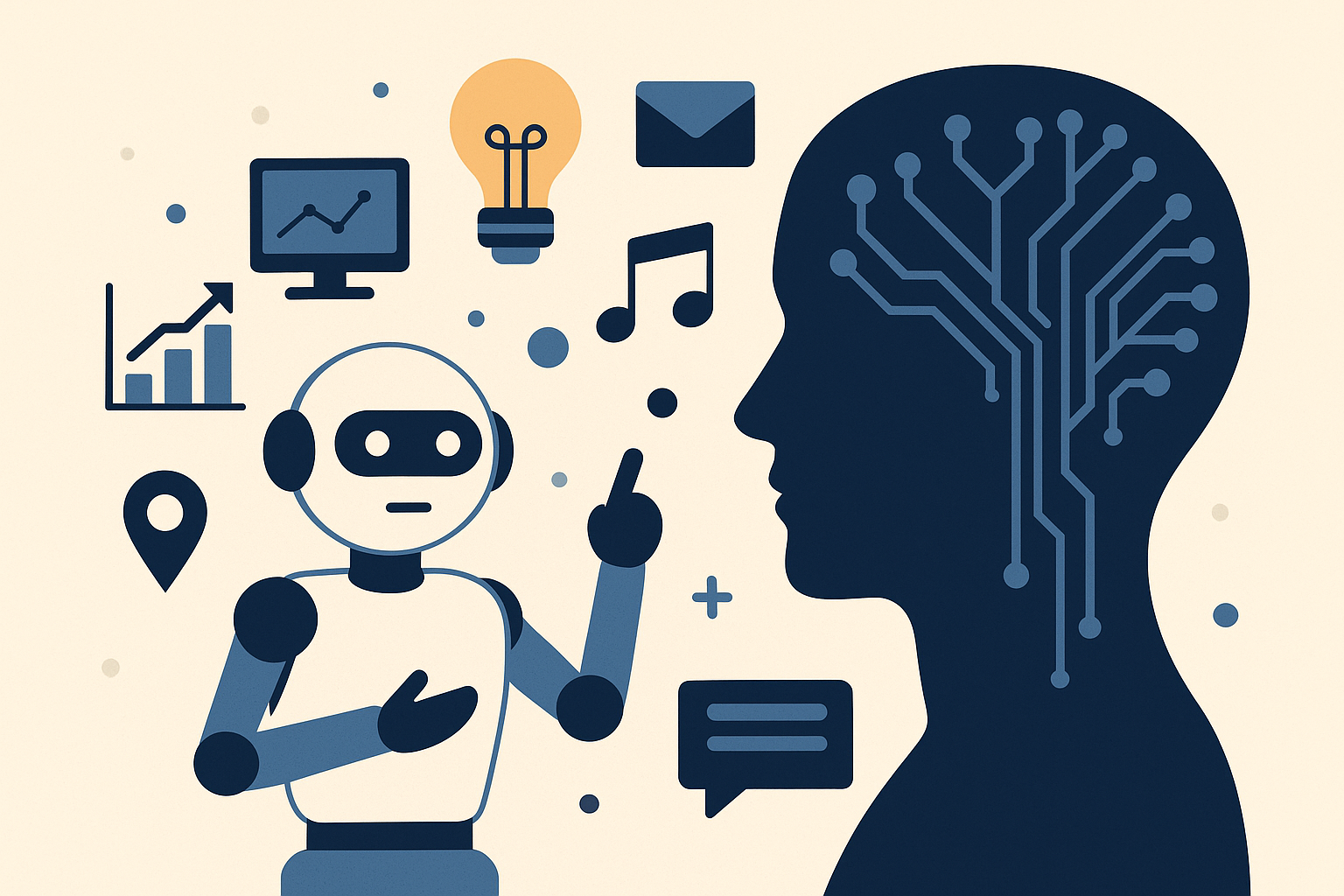Introduction
How Machine Learning Is Transforming Everyday Life. Machine Learning (ML), once a niche subset of artificial intelligence, has rapidly grown into a powerful force that’s revolutionizing how we live, work, and interact. Whether you realize it or not, ML is shaping your daily experiences—from the way your smartphone predicts your next word to how Netflix recommends your next favorite show.
This blog explores the various ways ML is influencing everyday life, how it’s used across industries, and what the future holds.
Table of Contents
What Is Machine Learning?
Machine Learning is a type of artificial intelligence that enables systems to learn and improve from experience without being explicitly programmed. It relies on data, algorithms, and computational power to recognize patterns and make decisions.
Popular types of ML include:
- Supervised Learning – Trained on labeled data (e.g., spam vs. not spam).
- Unsupervised Learning – Identifies hidden patterns in unlabeled data.
- Reinforcement Learning – Learns by trial and error using rewards.
Applications of Machine Learning in Daily Life
1. Smartphones and Virtual Assistants
Your smartphone is a hub of ML algorithms. From voice assistants like Siri, Alexa, and Google Assistant, to facial recognition that unlocks your phone, ML is embedded into the device.
- Voice Recognition: ML models enable your device to understand and respond to natural language.
- Predictive Text: Your keyboard learns your typing style and offers smart suggestions.
2. Social Media Platforms
Ever wondered how Instagram shows you posts you’re likely to enjoy, or how Facebook recommends friends? That’s ML at work.
- Content Curation: Algorithms analyze your behavior to serve personalized content.
- Facial Recognition: Used to auto-tag photos.
- Ad Targeting: Based on your interests, ML helps companies show you relevant ads.
3. Healthcare Advancements
ML is transforming diagnostics and treatment.
- Disease Detection: ML models help in early diagnosis of diseases like cancer, diabetes, and heart disease by analyzing medical images and patient records.
- Personalized Treatment: Algorithms tailor treatment plans based on patient data.
Example: Google’s DeepMind developed an ML model that can detect over 50 eye diseases as accurately as expert doctors.
Read more about AI in healthcare
4. Online Shopping and Recommendations
E-commerce sites like Amazon, Flipkart, and eBay use ML to enhance user experience.
- Recommendation Engines: Based on browsing history, previous purchases, and ratings.
- Chatbots: Offer 24/7 support using Natural Language Processing (NLP).
- Dynamic Pricing: Adjusts prices based on demand and competition.
Behind the Scenes: Machine Learning at Work
1. Fraud Detection in Banking
Financial institutions use ML to detect unusual patterns in transactions that could indicate fraud. These systems can adapt over time, becoming more accurate in identifying suspicious activity.
Example: Credit card companies analyze spending behavior to prevent unauthorized usage.
2. Navigation and Ride-Sharing Apps
Apps like Google Maps, Uber, and Ola use ML to optimize routes, predict traffic, and estimate time of arrival.
- Traffic Prediction: Based on real-time user data and past traffic trends.
- Dynamic Pricing: ML models adjust ride fares based on demand, distance, and time.
3. Smart Homes
From smart thermostats (like Nest) that learn your schedule, to voice-controlled lights and appliances, ML enables automation in modern homes.
- Energy Efficiency: AI optimizes power usage.
- Security Systems: Facial recognition and movement detection add a layer of smart surveillance.
Benefits of Machine Learning in Daily Life
- Efficiency: Automates tasks that would otherwise require human effort.
- Convenience: Makes services more personalized and responsive.
- Accuracy: Increases precision in fields like healthcare, navigation, and security.
- Cost-Effective: Reduces manpower and operational costs for businesses.
Challenges and Concerns
While ML has enormous benefits, it’s not without its drawbacks:
- Privacy Issues: Data collection can infringe on user privacy.
- Bias in Algorithms: ML models can reflect the biases in the data they are trained on.
- Dependence on Technology: Over-reliance can lead to loss of human oversight.
- Job Displacement: Automation may replace certain types of jobs, particularly repetitive ones.
The Future of Machine Learning
The future of ML is promising and expanding rapidly. We can expect:
- Smarter AI Assistants: More human-like interactions.
- Improved Healthcare: AI doctors in rural or underserved areas.
- Autonomous Vehicles: Safer, self-driving cars on the roads.
- Education Personalization: ML-enabled platforms that adapt to each student’s pace and style of learning.
One exciting development is Generative AI, like ChatGPT, which uses deep learning to produce human-like text, code, and images. These tools are already being used in writing, customer support, and design.
Explore how generative AI is changing industries
Conclusion
Machine Learning is no longer a futuristic concept—it’s a present-day reality that’s making life smarter, faster, and more efficient. From the moment you wake up and check your phone to using navigation on your way home, ML is influencing your decisions, easing your tasks, and enhancing your quality of life.
However, it’s essential to remain aware of the ethical and social implications that come with this technological revolution. As we continue to integrate ML into our lives, striking a balance between innovation and responsibility will be key.
Find more AI and ML content at:
https://allinsightlab.com/category/ai-machine-learning/

